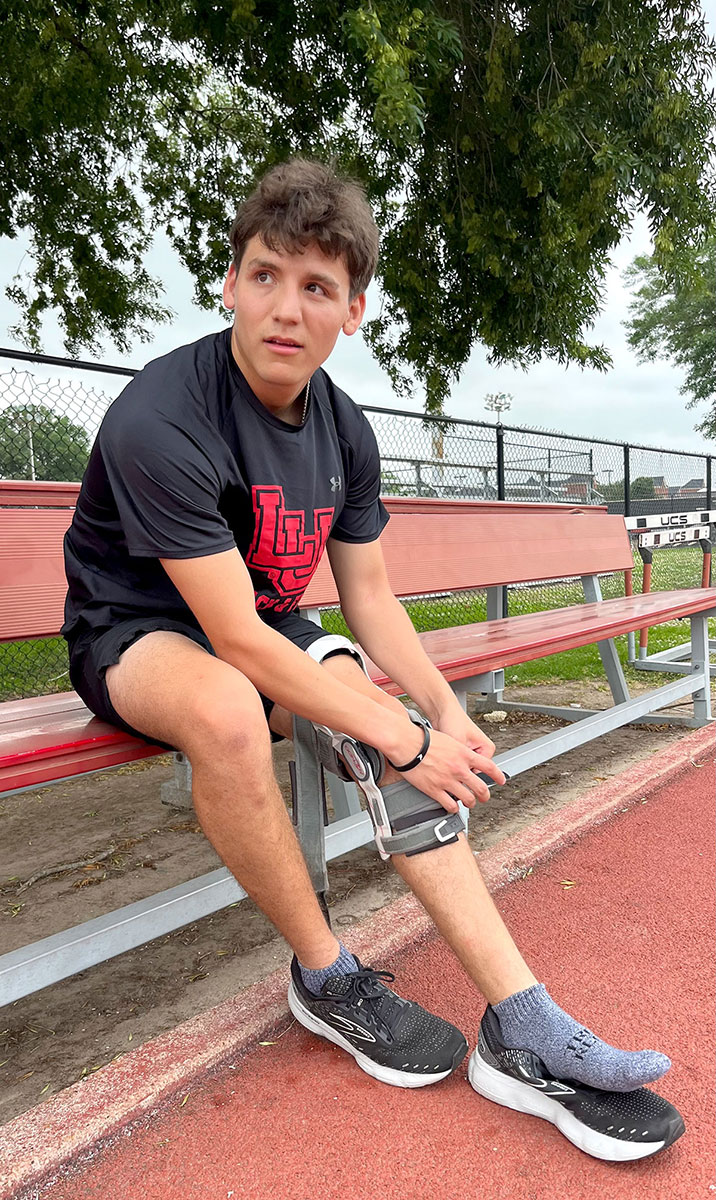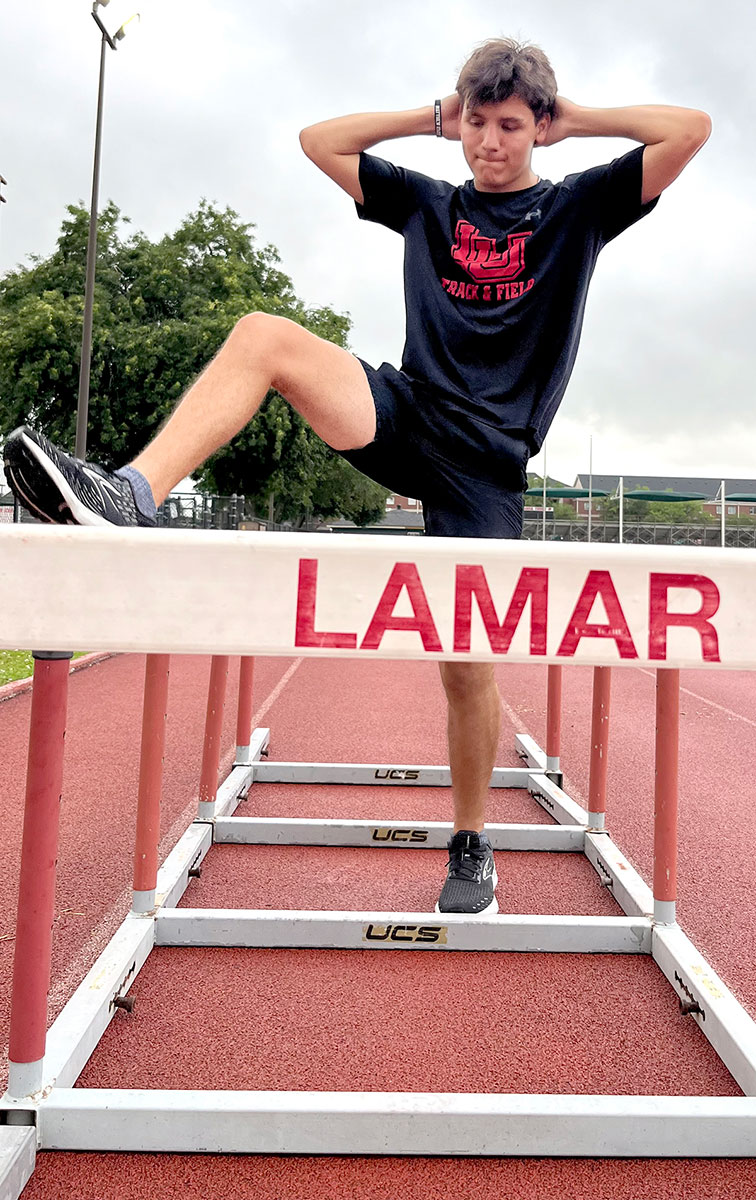
The joy an athlete feels when they know they’re becoming Division 1 athlete is a feeling that is unmatched. After all, only 1.9% of all high school track athletes go on to run D1. When they arrive at their school, they think of the glitz and glamour that comes with the hard-earned scholarship. They think of the season and how much harder they must work to compete at the top level. They feel they have something to prove.
What they don’t think of is not being able to compete.
Taylor Vela’s big moment ended almost before it began. The Kerrville freshman tore his meniscus playing an innocent game of basketball before classes had even begun.
“I was just playing basketball trying to guard someone when I heard and felt a pop in my knee,” Vela said. “I was able to walk after and I tried running on it for two weeks, but the pain got too much to handle. I started doing everything with a limp and I had to stop.
“I was just scared because I wasn’t going to be able to run, and I was more fearful of what my coach was going to say. My thought at the time made me think I could be cut and lose my opportunity in a flash. I thought I would be disappointing the team for not making my freshman year special. I thought they would hate me because I got hurt and it would be used against me.”
Vela was not cut from the team as he had feared, but forced to take a medical redshirt year, meaning he would miss a year of competition but would not lose a year of eligibility.
After the initial shock, Vela had to have surgery on his knee. He said he was so nervous that he started sweating profusely. Only one person made him feel safe, his mother.
“She took all the fear and overthinking away during our multiple conversations,” he said. “There wasn’t anything specific to the conversations, she just started making me laugh to the point where I started to ignore the surgery. She was able to ease my mind and calm me down enough to make it easier.”
In the weeks following the surgery, Vela said he found everyday tasks to be a challenge.
“The worst came later,” he said. “It was hard to just use the crutches and walk up and down the stairs, and I had to get one of my teammates to help me get down. One moment that sticks in my mind is when I had forgotten my backpack after I had made it down to my dorm lobby. My teammate ran up the stairs and got into my room just to bring my backpack — it was special to me. Another thing I had never been used to was, early in the injury I couldn’t put pressure on my leg, so my roommate would help me shower and get dressed.”
Rehabbing the injury required a lot of repetitive physical therapy. Vela said it is mentally draining going through the same process every day and only getting better a little at a time.
“Three months into the injury I wanted to quit so bad because I felt like I didn’t have a place in running anymore,” he said. “I saw my team doing their thing and I just couldn’t do anything. It was just hard seeing them run, train, and get better and faster each day. For the first four months, the athletic trainers had me do a lot of mobilization and stretching with a brace on. I felt like it was pointless. It just felt like a constant loop where I was never getting better. It’s hard to think of a word to describe my mindset at the time, it was just demoralizing.”

However, Vela didn’t become a Division 1 athlete giving in to adversity. He described his mindset as determined and motivated before the injury occurred. He let those traits help get him through the rough parts of his rehab.
“After months passed, I was able to slowly do my workouts with the brace off and they moved me more to plyometric workouts like box jumps and balancing,” he said. “Once I had my brace fully off, I finally felt like I had made some progress. I grew confidence after this; I started thinking that a comeback to running was possible.”
Vela final before he was able to start running felt like the home stretch of a race, he said.
“They would start scraping and cupping around my knee so the pain around it would go away, and this felt so much better,” he said. “I felt like I had made so much progress. It was my first-time feeling happiness through this process.”
All the rehab and hard work has led to Taylor making a comeback. He said the first day back to running was euphoric.
“My first run back was an easy five-minute run,” he said. “My first thought when I stepped foot on the track was just joy knowing I was getting back to being around the boys.”
But there was also some trepidation that accompanied his first run.
“During the run I started to overthink,” Vela said. “I was afraid of my knee popping out, or something happening that restarts it all. When I finished, I had a teammate right beside me and it made the overthinking go away. It was my first time feeling relief in a while.”
Vela said the fear is no longer there. The past is in the past and the only thing that he can do is work towards the future.
“I am now a stronger runner and person because of my trials and tribulations,” he said. “I’m not scared anymore. I’m more like, let’s get it, I want to get faster, let’s just do it again.”
